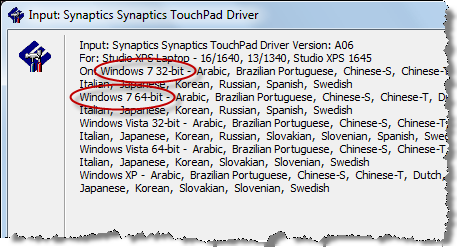The single biggest reason why Windows 7 won't be another Vista

You want to know why Windows 7 isn’t going to be another Vista? Here’s one big reason: drivers. This time, hardware makers seem to be keeping pace with the operating system and the hardware.
Case in point: I’ve spent the past three months collecting detailed reports about 10 systems I’ve been using to test-drive the final version of Windows 7. One is a Dell Studio XPS 13 notebook. It’s sleek, fast, and good looking, with some little touches that I’ve really come to like: an illuminated keyboard and automatic logon via facial recognition. But it has also suffered from one nagging issue that other owners of this machine have complained about as well. After resuming from sleep, the wired network connection refuses to work and stays on strike until a restart. The touchpad also occasionally works in erratic fashion, with some pointer movements jittering across the screen.
So I was very pleasantly surprised today when I logged onto Dell’s support site, selected this model from my systems list, and saw a new Windows 7 x64 category. Even better, the available downloads include a new BIOS, date-stamped September 16, and new drivers for the Nvidia chipset, dated today. There are also new drivers (just released yesterday) for the IDT audio subsystem and for the Synaptics touchpad. The QuickSet software that enables hardware buttons has an August date stamp. (There’s no update yet for the Nvidia Nforce network adapter, so I used the Vista x64 model instead.)
How much trouble was it to get all those changes slipstreamed into the system?
It took about 20 minutes (including three reboots) to download all the updates, flash the BIOS, uninstall the old QuickSet and touchpad driver packages, and install the various updated driver packs.

When I was done, I let the system go to sleep and then resumed it; the network was active immediately. And the touchpad now responds smoothly to input.
That sounds like a lot of work, and it is. But it will involve no work for anyone buying this notebook model with Windows 7 already loaded, a configuration that Dell will no doubt offer on this system as soon as they are contractually able to do so. Avoiding the hassle of OS and driver upgrades is a good reason to take Dell up on their Windows 7 Free and Easy Upgrade program. You place the order now, they’ll install Windows 7 and deliver it around October 22. (You don’t pay until it ships.)
I thought it was also interesting to note that for this model Dell includes only x64 drivers. Current models are only available with the 64-bit version of Windows Vista. Judging by this driver update, 32-bit versions of Windows 7 will be at least partially supported.
Back in early 2007, when Windows Vista shipped, hardware makers were struggling to keep up. Early releases of some drivers were unbearably bad, and it took about six to eight months after Vista’s launch for a full selection of decent drivers to appear for many common devices.
Today, two weeks before the launch of Windows 7, the video drivers are ready and waiting. The three biggest names, Nvidia, ATI, and Intel, have recent releases of universal drivers that work shockingly well. That was not the case with Vista. Definitely not. I’ve seen a steady stream of drivers delivered via Windows Update as well, for things like audio adapters and network controllers and fingerprint readers. The system makes an occasional mistake, but those have been extremely rare, in my experience.
At one point this summer, a well-informed source told me that Microsoft expected 8 million people to be actively participating in the Windows 7 beta program at its peak. I imagine that several times that many computers are running it now. If there were significant driver issues, we would have heard the screams by now. But I'm hearing surprisingly few complaints.
Driver hiccups are a natural part of any upgrade cycle. This time, though, most of those hiccups happened quietly offstage, during the three months since mid-July, when hardware makers and system builders got their hands on the final bits. As my experience proved to me today, most hardware makers are ready this time around.